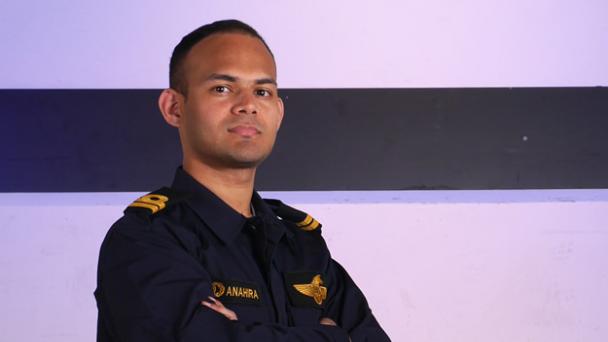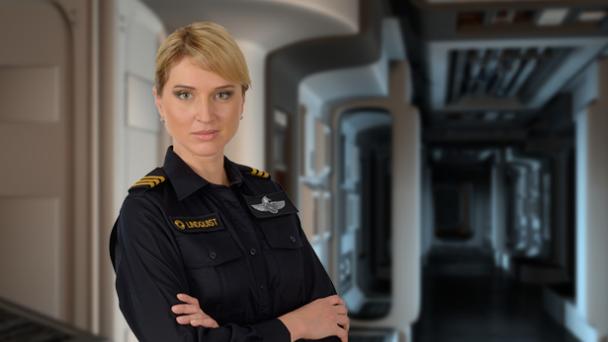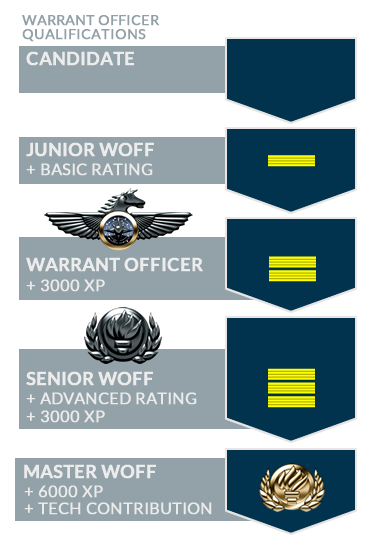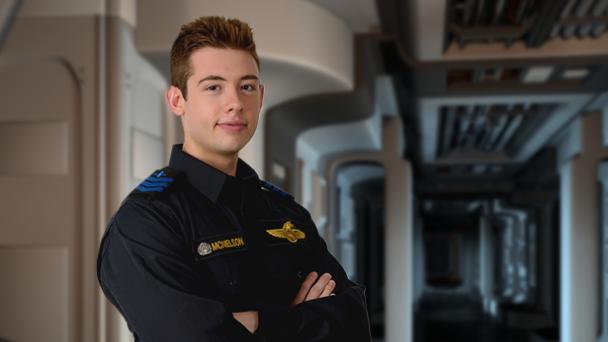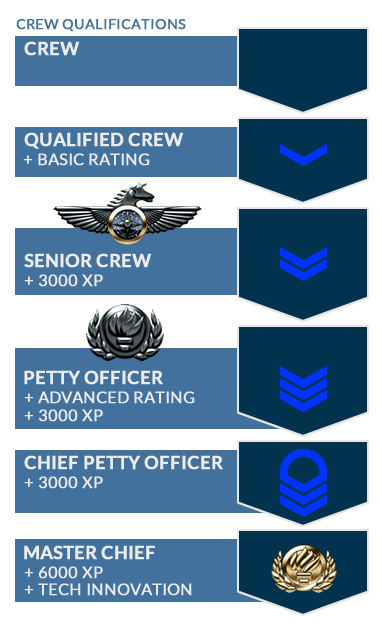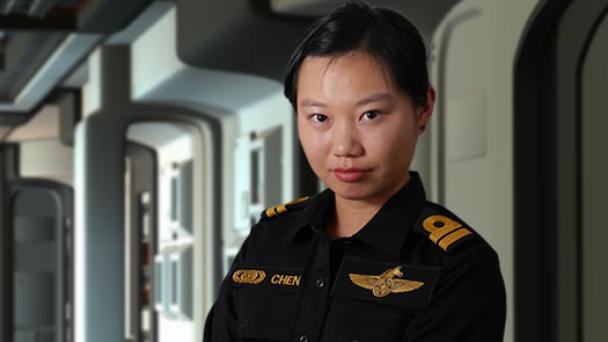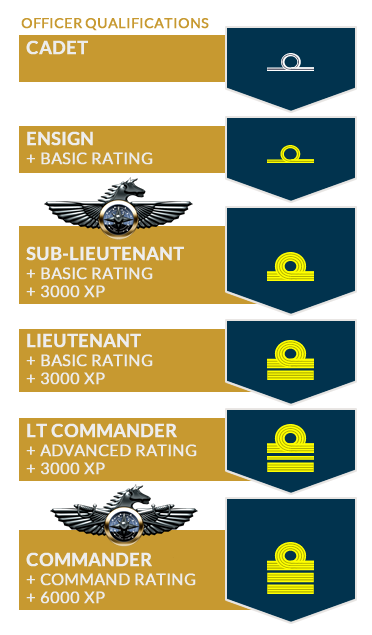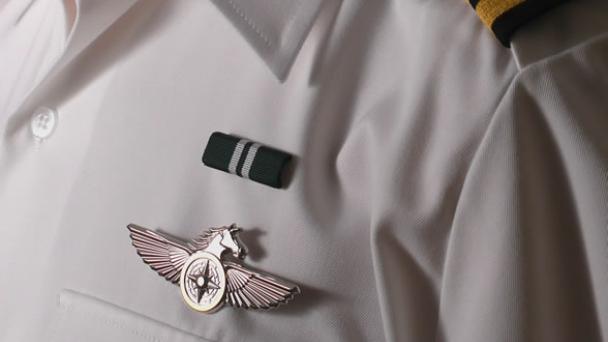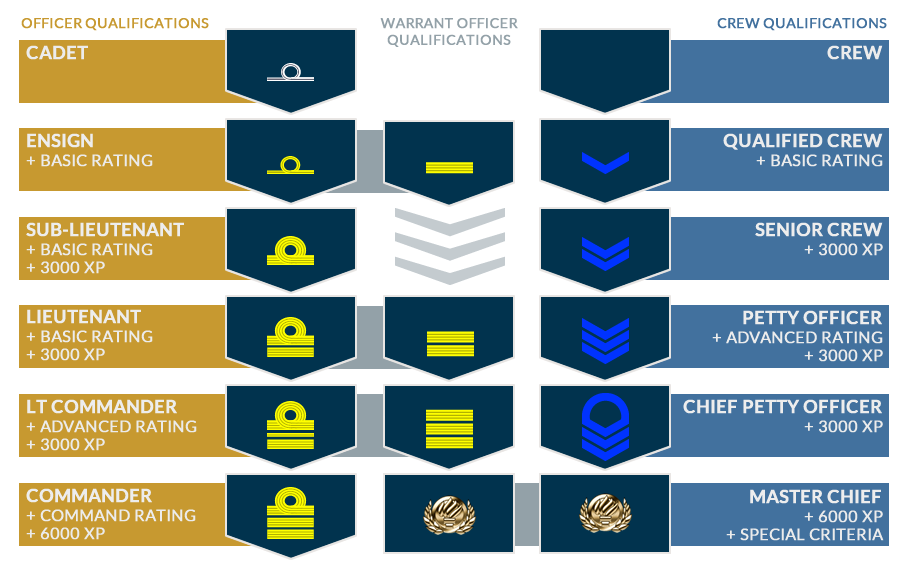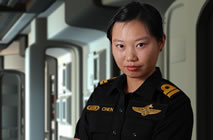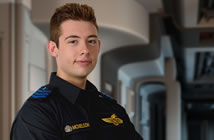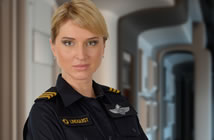Lieutenant Neeraj Anahira is a tactical officer, coordinating the vessel’s tactical operations and serving as ‘tactical point’ on the bridge during combat situations, ensuring that the Conn has current information on the vessel’s Tactical Operating Environment (TOE) and available strategic options.
A tactical officer is also responsible for the management of tactical crew and systems aboard the vessel.
Check out Neeraj's profile
What Would I Be Doing?
Interested in Neeraj’s role as a tactical officer?
Most missions will require tactical capability, a key component of which is maintaining the Tactical Operating Environment. This involves monitoring the space around Endeavour, detecting and tracking other vessels using EMDAR and keeping the conn updated.
Another key tactical duty is defending the ship from attack. Endeavour’s primary weapons are powerful railgun-launched guided missiles (referred to as torpedoes) which are configured and fired from the bridge tactical console. Countermeasure systems provide defence against incoming fire.
Tactical officers are rated on multiple systems, so for simpler missions they could cover both EMDAR and weapons functions from the bridge tactical console.
More complex missions may require separate EMDAR and weapons operators, with the tactical officer covering one of these in addition to their point duties.
Advanced missions may require the tactical officer on the bridge coordinating crew teams running EMDAR, weapons and other tactical systems.
More on Combat in Space
Becoming a Tactical Officer
As an officer you’ll need broad operational knowledge and experience. You career will involve training at the Academy across a range of ship systems and gaining mission experience.
Officer Career Track
First Steps
It starts by signing up as a cadet. It's obligation free and provides access to more information about the mission and Endeavour's technology as well as access to the Academy and assistance from instructors.
You’ll be asked to choose a ship system that interests you and begin training. An aspiring tactical officer would likely want to attain a rating on either EMDAR or Weapons early to secure mission time.
When you successfully complete a training course you’ll be qualified (or ‘rated’) to operate that system on missions. You’ll also be promoted to Ensign.
Advancement
As a new ensign you’ll look to join a crew and undertake missions. Each mission completed gives you experience points (XP) which count towards promotion.
You’ll also need to keep training, as additional ratings are also needed for promotion. Having both EMDAR and Weapons ratings would give broad mission coverage, for example, and while there are other tactical ratings available it’s recommended that you get at least one rating from another branch.
What you choose and in what order will depend on your interests, but some suggestions include:
- Impulse operations would give you a good understanding of vessel maneuvering in combat situations
- Weapons engineering would provide an understanding of how your weapons systems tick
- Sensors would provide more insights than EMDAR about other vessels which could be very useful tactically
Ready for Command
Once you make Lieutenant, you’ll be able to start logging watch XP - a class of experience gained when in command of a mission. This type of experience gains you access to command training and a coveted command rating.
You’ll also be able to gain XP outside of missions as an instructor, supporting crew as they begin their new careers.
Not Sure?
Choosing your first rating doesn’t lock you into any particular career track or role. Choose something that interests you so that you can try simulator missions and get a feel for what you enjoy most.
There are no barriers to changing career tracks at any time. Your accumulated experience and ratings are fully transferable.
Compare Career Tracks



